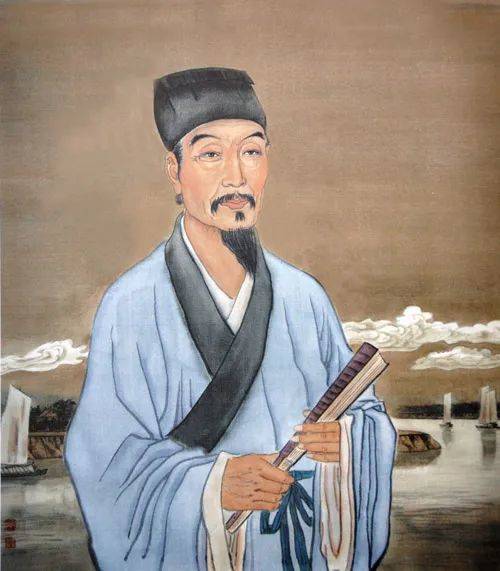In this post I mentioned that I would have started talking about the original Journey to the West that will inspire works such as Saiyuki by Minekura and Dragon Ball series by Toriyama (rest in peace). Journey to the West has strong roots in Chinese folk religion, Chinese mythology, Chinese Buddhism, Confucianism, Taoist and Buddhist folklore, and the pantheon of Taoist immortals and Buddhist bodhisattvas are still reflective of certain Chinese religious attitudes today, while being the inspiration of many modern manhwa, manhua, manga and anime series. The novel is at once a comic adventure story, a humorous satire of Chinese bureaucracy, a source of spiritual insight, and an extended allegory. This won't be a fresh post because it will be mostly based on these posts I wrote years ago and posted in my Tumblr account that is dedicated to Saiyuki (one of my favourite Anime), but at the same time I will add further info I gained over the years and it will be improved in terms of writing after I learned some basics of academic writing even though I don't label my posts as "academic", more like hybrid ones. This also means I will cut in six parts these posts in order to respect the original ones in terms of number. So, without further ado, let's start.
--------------------------------------------------------------------------------------------------------------------------
Let's start by saying that Saiyuki is a Japanese word, specifically it is the Japanese pronunciation of the Chinese word (西遊記) Xijou Ji and means "Journey to the West". It is the name of one of the great Chinese novels, belonging to the group of the great classical novels. The group usually includes the following works: Ming dynasty novels Romance of the Three Kingdoms, Water Margin, Journey to the West, and The Plum in the Golden Vase; and Qing dynasty novels Dream of the Red Chamber and The Scholars.
There have been a number of groupings. Romance of the Three Kingdoms, Journey to the West, Water Margin and The Plum in the Golden Vase were grouped by publishers in the early Qing and promoted as Four Masterworks. Because of its explicit descriptions of sex, The Plum in the Golden Vase was banned for most of its existence. Despite this, Lu Xun, like many if not most scholars and writers, place it among the top Chinese novels (1).
These pillars of Chinese literature have influenced not only the literature, but also other arts such as the theatre, the cinema not just in China, but also in other countries such as Vietnam, Korea, Taiwan and Japan.
The modern 100-chapter form of Journey to the West dates from the 16th century (2). Embellished stories based on Xuanzang's journey to India had circulated through oral storytelling for centuries. They appeared in book form as early as the Southern Song dynasty (1127–1279) (3). The Yongle Encyclopedia, completed in 1408, contains excerpts of a version of the story written in colloquial Chinese, and a Korean book from 1423 also includes a fragment of that story (4). The earliest surviving edition of Journey to the West was published in Nanjing in 1592. Two earlier editions were published between 1522 and 1566, but no copies of them survived (5). The authorship of Journey to the West is traditionally ascribed to Wu Cheng'en, but the question is complicated by the fact that much of the novel's material originated from folk tales (6).
I don't want to go too in depth on the work's authorship because it's not the purpose of this blog and it would become very long and maybe too academic for some readers, so let's continue with the story.
The novel has 100 chapters that can be divided into four unequal parts. For the purposes of these posts I will only focus on the second part which talks about the adventures of the Buddhist monk Xuanzang (actually inspired by a monk, Xuanzang/Tang Sanzang (唐三藏) of the Tang dynasty) who must take a dangerous journey from China to India to retrieve important sutras not available in China. As journey companions of this fantastic journey (in every sense) we have the Monkey King Sun Wukong (孫悟空), the pig Zhu Bajie (豬八戒) and the sand demon Zha Wujing (沙悟淨) and the horse Yu Long (玉龍) or Bai Long Ma (白龍馬) who is none other than the third son of the Dragon King of the South Sea and he is specifically a dragon prince.

from: https://bangqu.com/wVz7gN.html
As I said, the story is inspired by a real character who actually traveled to India to recover some sutras, since the various translations of some Buddhist texts in China said everything and its opposite, and also certain words were not translatable. So Wu Cheng'en was inspired by another text known as Great Tang Records on the Western Regions.
I stop for now, next time I would like to talk more about Great Tang Records on the Western Regions.
References and footnotes
(1) Lu Xun, A Brief History of Chinese Fiction (Peking: Foreign Languages Press, 1959), pp. 232–234
(2) Chang, Kang-i Sun (2010). "Literature of the early Ming to mid-Ming (1375–1572)". In Chang, Kang-i Sun (ed.). The Cambridge History of Chinese Literature, Volume II: From 1375. Cambridge University Press. pp. 1–62. ISBN 978-0-521-85559-4.
(3) Ibidem
(4) Ibidem
(5) Ibidem
(6) Jenner, William John Francis (1984). "Translator's Afterword". Journey to the West. Vol. 4 (Seventh ed.). Beijing: Foreign Languages Press. pp. 2341–2343